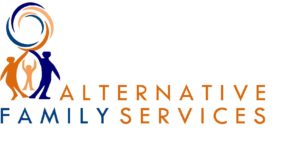The Critical Role of Schools in Supporting Foster Youth Education
The journey for children and youth in foster care is often marked by significant challenges, and their educational experiences are no exception. Across the United States, including in California, the state of foster youth education is unfortunately substandard, leading to long-term disadvantages. However, schools play a vital, multi-faceted role in addressing these inequities and supporting foster youth, both directly and through collaboration with community partners.

When foster youth receive a quality education, we all benefit, paving the way for a more hopeful tomorrow for these young individuals and our communities.
The Educational Hurdles Faced by Foster Youth
Statistics from California paint a stark picture of the educational disparities faced by youth in care:
- Chronic absenteeism affects over 20% of California foster youth, double the state average.
- Only about 64% of foster youth graduate from high school, compared to approximately 86% statewide. Other data indicates an even lower graduation rate of 56% for California foster youth, compared to 84% statewide, and a dropout rate of 8% versus 3% statewide.
- A mere 13% of foster youth high school graduates are deemed prepared for college or a career, far below the 44% statewide average.
- Over 14% of California foster youth have been suspended at least once, compared to 3% statewide, and are twice as likely to have served an out-of-school suspension. One source indicates 1.2% of foster youth were suspended at one point during the last school year, compared to 0.2% for youth overall statewide.
- Foster youth consistently perform below standards in English language arts and Math, with significantly lower proficiency rates on state assessments compared to their non-foster peers.
- School stability is a major issue, with 34% of foster youth aged 17-18 experiencing five or more school changes, and a third of all foster youth attending two or more schools in a single year. This is compared to 7% of all students nationwide.
- Foster youth are less likely to attend schools offering Advanced Placement classes.
These academic struggles can lead to profound long-term disadvantages, including an increased likelihood of homelessness, addiction, chronic physical and mental illness, and involvement with the criminal justice system.
Schools as a Foundation for Support
Given these challenges, schools are uniquely positioned to offer critical support:
- Providing Stability and Consistency: For children who frequently experience disruptions in their lives, a stable school environment can offer a crucial sense of normalcy and continuity. Reducing school changes is vital for academic success.
- Identifying At-Risk Youth and Families: Schools can serve as an early warning system, helping to identify at-risk youth and families who may be in need of support before a crisis escalates. This is particularly important for preventative services.
- Facilitating Preventative Services: The concept of school-based wraparound or preventative services aims to provide support within the school setting to help families and youth address issues, potentially preventing children from entering the child welfare system in the first place. Intensive Family Preservation Services (IFPS), for example, aim to empower families with the skills and support needed to navigate crises without referral to social services, ultimately reducing the number of youth entering the child welfare system.
- Supporting Transition Age Youth (TAY): For older foster youth, known as Transition Age Youth (TAY), pursuing educational goals is especially challenging due to financial barriers, lack of housing and transportation, and behavioral or mental health needs. Schools, in collaboration with organizations, are crucial in supporting these young adults to continue their education.
- Connecting to Resources: While not always direct providers, schools can be a point of connection for foster youth to access external resources, such as financial aid for college or vocational education, life skills training, housing support, and independent living skills, which are often provided by organizations like Alternative Family Services (AFS).
How We Can Improve Outcomes
Improving educational outcomes for foster youth requires a collective effort, with schools at the heart. For one, investing in local organizations that provide critical needs and services to foster youth can have a significant impact.
Many non-profits now offer programs that support TAY with life skills, education, job support, transitional housing, and independent living skills. Schools can partner with organizations that have full-service partnerships with businesses and organizations for tutoring, training, and other educational supports for TAY.
Ultimately, the goal is to provide foster youth with the stability, resources, and support they need to thrive academically. When foster youth receive a quality education, we all benefit, paving the way for a more hopeful tomorrow for these young individuals and our communities.
Alternative Family Services (AFS) is dedicated to supporting vulnerable children and families in California through foster care, adoption, and mental health services, including significant efforts to improve educational outcomes for foster youth.
